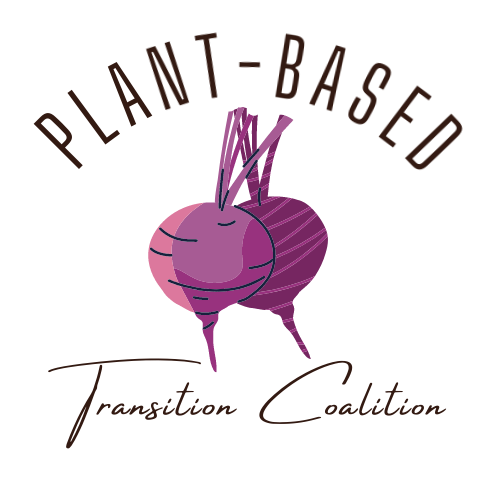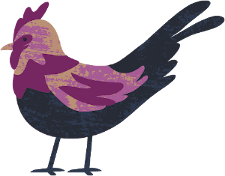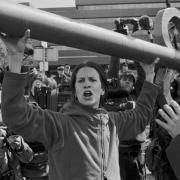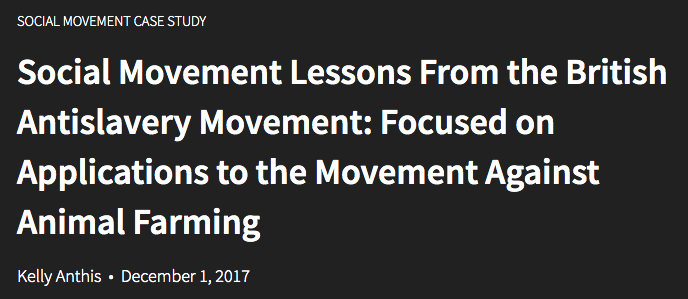Resources
Videos
Organizing 101 and Kingian Nonviolence
An excellent introductory presentation regarding how to organize.
Intersections of Justice: Building an Inclusive Animal Rights Movement
Does veganism have an image problem?
Christopher Sebastian McJetters discussed how perceptions of elitism in vegan communities foster unfavourable opinions, and a few positive ways creative activists deconstruct that narrative.
Why We Need Social Movements
This workshop describes key pillars to understand social movements. It explores movement as an ecology of different approaches to change and think about seasons as a way to understand ourselves, our organizations, and our movements.
Reinventing Organizations
Increasingly we are disillusioned with the way we run organizations today. We all somehow sense that there simply must be better ways to run our businesses, nonprofits, schools and hospitals. This hopeful talk shares the key insights from groundbreaking research into the emergence, in different parts of the world, of truly powerful and soulful organizations that have made a radical leap beyond today’s management thinking.
Articles
It’s time to retire one-off protests in favor of direct action campaigns to maximize the chance of winning victories.
George Lakey
“In order to build the kind of power that creates change you need a direct action campaign that harnesses a series of actions into an escalating sequence. “
“A campaign makes a demand and focuses on a specific target that can yield that demand: Taco Bell, a university administration, a bank, the city of Montgomery, Alabama, the federal government’s executive branch. The choice of target is ours, as well as the way we frame the issue and demand.
…
Campaigns are ongoing and therefore invite participants to play what strategist Bill Moyer called the four fundamental roles for social change. Organizers are attracted because they see potential for more growth in numbers. Helpers/community-builders are attracted because they see a need for mutual aid that builds sustainable activists. Advocates are attracted because they see the chance to interface with influencers and decision-makers in a way that gives campaigners leverage points they might otherwise miss. And rebels are attracted because a direct action campaign needs people unafraid of confrontation and conflict.”
Bill Moyer's Four Roles of Social Activism is a powerful tool that clarifies how we work for change on two levels: individually and organizationally.
George Lakey
“While some activists dismiss one or more of these roles as uncool — “the nonprofit-industrial complex” or “sellout lobbyists” or “infantile protesters” — Moyer found the record clear: Successful social movements include all four roles. “
The advocate role
The advocate focuses on communication with what Moyer called “the powerholders,” who can change a policy or practice. Think of the civil liberties lawyer suing the city for stop-and-frisk that profiles people of color, or the lobby group urging city council to change that policy. Moyer calls this role the “reformer,” while acknowledging that an advocate might urge changes that are radical in content.
In workshops, I invite people to scan their childhoods to recall whether they usually turned to an authority to correct what they felt was an injustice or problem. Maybe they went to the teacher after class to report bullying on the playground, or told a parent that little sister was upset. I’ve found that many adults who prefer to play the advocate role in social movements expressed that preference early, often developing some skill and confidence.
The helper role
The helper is drawn to direct service, personally doing what they can to remedy the situation. They address gender and racial discrimination in jobs by teaching how to write resumes or initiating job training. They attack carbon pollution by weatherizing houses or starting solar installation co-ops. Because much of mainstream community life is marked by service, Moyer’s name for this role is “citizen.”
When adults known for playing helper roles look back on their childhood they sometimes remember their own intervention to stop the bully, or their being the first one to bring a band-aid when little brother falls off the bike.
The organizer role
While the advocate and helper who want to make a bigger difference may themselves need to organize — by starting a nonprofit, for example — the organizing part is not the most satisfying for them. The advocate is happiest when convincing the judge that equal marriage is constitutional. The helper loves to witness the graduating class that includes more people of color.
The organizer, on the other hand, experiences joy from collecting people who may not even know each other and turning them into a well-oiled team, or tripling the attendance at the union local’s monthly meetings. Organizers often believe that the sheer power of numbers will make change because powerholders are afraid of alternative sources of power and may concede something to head off further growth.
When organizers were children they may have been the ones who revived the celebration of Martin Luther King Day at school, or boosted the flagging morale of the drill team. Moyer calls them “change agents,” and he himself was certainly that.
The rebel role
The rebel who sees a problem or injustice prefers to make a commotion of some kind to force powerholders to make a change. Martin Luther King Jr. explained that a campaign must create a crisis. Gandhi made so much trouble that he made India ungovernable by the British. True, some famous rebels needed organizing skills to scale up their commotion to the crisis point. But rebels look at numbers not for their own sake but to determine “how many people will it take to create what degree of crisis?” Alice Paul left the mass movement for woman suffrage in order to lead a smaller band of rebels willing to make the nonviolent trouble that forced U.S. President Woodrow Wilson to give in to justice.
The Dilemma Demonstration
Using nonviolent civil disobedience to put the government between a rock and a hard place
“When the Canadian government refused to make public draft documents in their negotiations over the Free Trade Agreement of the Americas, Operation SalAMI organized hundreds of citizens to show up holding “Search and Rescue Warrants” for the release of these draft documents. The government responded by arresting one hundred citizens for requesting their right to information. In response the media and general public demanded to know what the government was trying to hide. Behind the success of the campaign was a strategy that included a number of common tactics, including petitions, letter writing, etc., but with the added twist of an unequivocal ultimatum, civil disobedience and the drama of the Search and Seizure Operation, a type of nonviolent direct action. Operation SalAMI’s dilemma demonstration tactic, as part of a broader nonviolent campaigning strategy, pressured the government to act according to its professed values and at the requests of its citizens.”
Abstract
“Studying past social movements can provide invaluable insights for modern movement strategy. This report aims to assess (1) what factors led the British government to abolish the transatlantic Slave trade in 1807 and then human chattel slavery in 1833, and (2) what those findings suggest about how modern social movements should strategize. While many of the implications are generalizable to a variety of movements, the analysis will focus on applications to the movement against animal farming. Key implications include the need to focus on institutional change, the circumstances under which strategic reforms can facilitate the eventual elimination of the institution, and what messaging can best generate support.”



